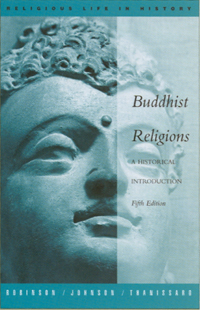The serious study of Buddhism in the West began in 1844, when the French philologist Eugene Burnouf came to the conclusion that certain religions encountered by European explorers and traders in East Asia, Tibet, India, Sri Lanka, and Southeast Asia were in fact branches of a single tradition whose home was in India. The discovery of a connecting thread among these Buddhist traditions was such a major intellectual feat that it has continued to shape perceptions that despite superficial differences, these traditions share a common core. Thus the West has perceived Buddhism as a single religion, much like Christianity or Islam, with the differences among its various permutations analogous to the differences among Protestants, Catholics, and Eastern Orthodox Christians. For more than a century after Burnouf’s discovery, Buddhologists—scholars of the Buddhist tradition—tried to delineate the essential characteristics of that common core, but the data refused to fit into any clearly discernible mold.
It seems better to regard the term “Buddhism” as describing a family of religions, each with its own integrity, much as “monotheism” covers a family of religions that are related but so inherently different that they cannot be reduced to a common core. There is no universal set of criteria to decide whether the differences between traditions are enough to class them as different religions rather than different sects within the same religion, but a few general criteria would include:
 •They are institutionally separate.
•They are institutionally separate.
•They cite different sources of inspiration as providing the final word on their doctrines and practices.
•They have different views of the ultimate nature of the primary focus of their veneration—i.e., different notions of who or what, in an ultimate sense, the Buddha is.
•They have different views on the goal of their practice and the legitimate means to attain it.
In the modern world, at least three separate Buddhist religions can be delineated: the Theravada tradition, centered on the Pali canon; the East Asian tradition, centered on the Chinese canon; and the Tibetan tradition, centered on the Tibetan canon. The advantages of viewing these three traditions as separate religions are that each is granted its own integrity, without invidious comparison, and that students of comparative religion are alerted to the fact that no one tradition speaks for all of Buddhism. Just as it is obvious that there is no point in asking about “the monotheistic position” on a particular moral, political, or spiritual issue, there is no point in asking about “the Buddhist position.” When the religions of the world are compared, for whatever purpose, then at the very least representatives of all three Buddhist religions should have a place at the table.
Some people, especially in the West, may feel uncomfortable at the idea of dividing Buddhism into different religions, for the division between monotheistic religions has often been underscored by pogroms, genocide, or war. However, Asian Buddhists have long commented that on encountering other forms of Buddhism, they are struck by how radically different they are, yet they have never felt motivated to wage war on the other forms. Thus, in viewing the different traditions as separate religions and noting how those religions have never turned violent on one another, we gain examples of how different religions can maintain their differences, yet live together in peace.
From Buddhist Religions: A Historical Introduction, 5th edition, by Richard H. Robinson, Willard L. Johnson, and Thanissaro Bhikkhu. Wadsworth Publishing, 2005, $44.95 paper. Reprinted with permission.